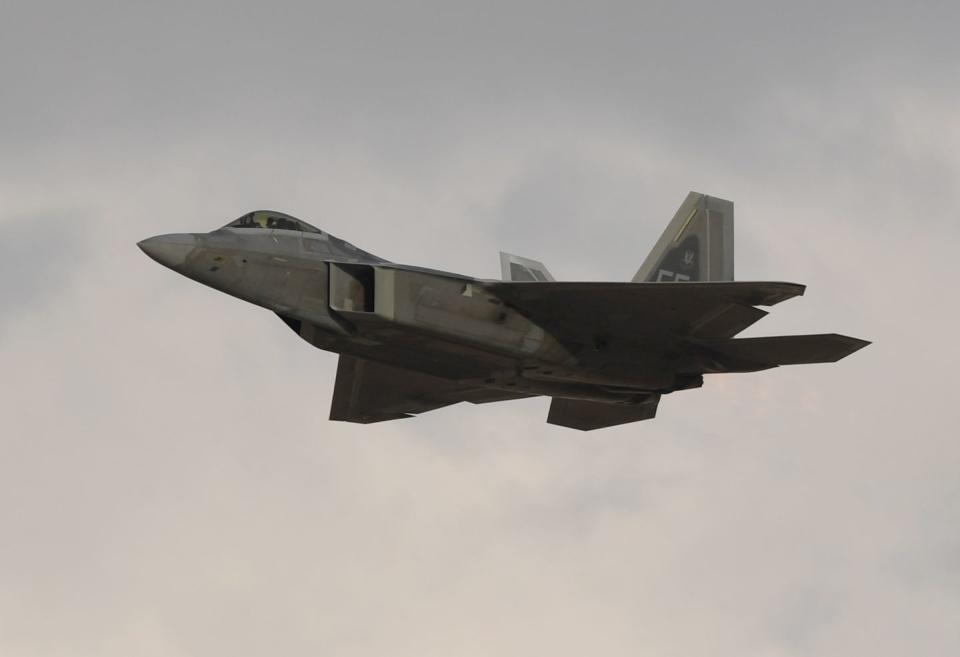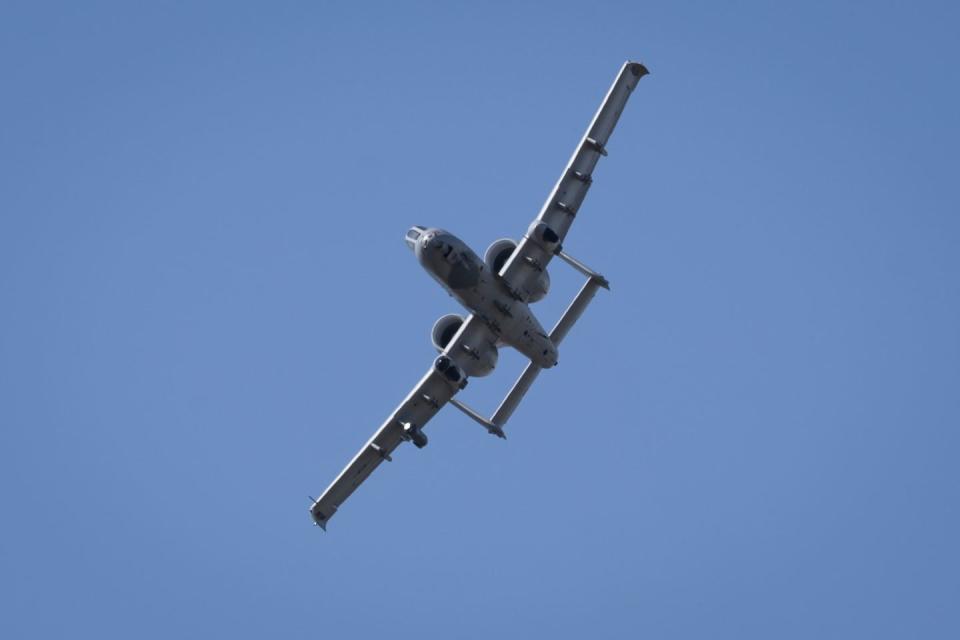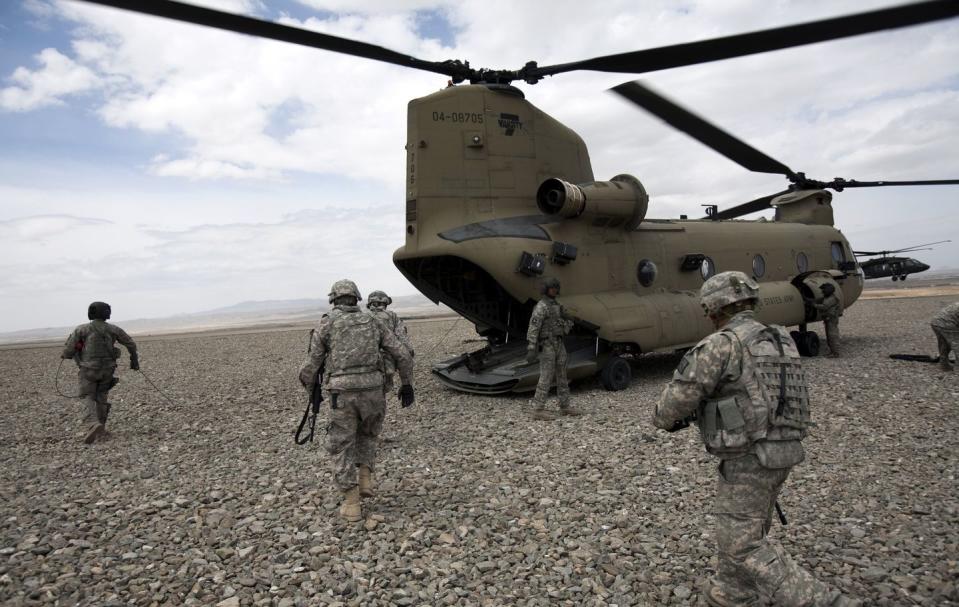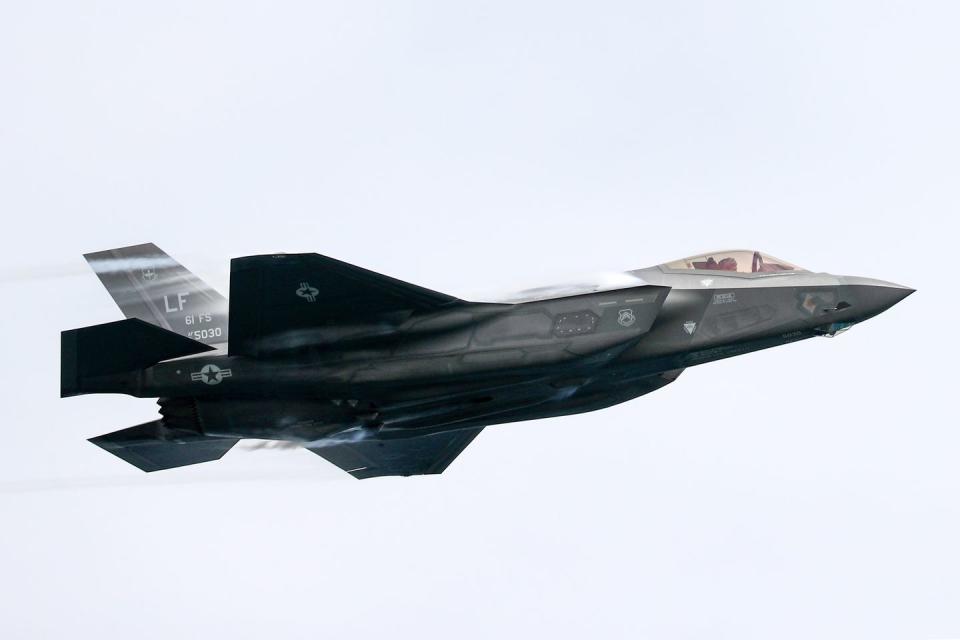America's Military Aircraft Are Barely Ready for War
A new U.S. government report warns over the last nine years, few of the Pentagon’s aircraft were ready at least 80 percent of the time.
Only two out of 46 aircraft types were “mission capable” for the majority of the last nine years.
One bright spot? The Pentagon’s F-35 fleet, including Air Force F-35As, Marine Corps F-35Bs, and Navy F-35Cs, are generally improving in mission availability.
A new report from the U.S. Government Accountability Office slams the readiness rate of U.S. military warplanes, revealing that hardly any of them were able to maintain a consistently high level of “mission capable” aircraft over the last nine years.
✈ You love badass planes. So do we. Let's nerd out over them together.
The report, Weapon System Sustainment, studied 46 types of military aircraft flown by the U.S. Air Force, Navy, Marine Corps, and Army. The report analyzed combat planes such as the F-22 Raptor, F-35 Joint Strike Fighter, F/A-18C Hornet, and A-10 Thunderbolt, but also important support aircraft like the C-17 Globemaster III transport, KC-135 Stratotanker, and E-6B Mercury nuclear command and control aircraft.

The report graded the 46 aircraft types on their ability to maintain a mission-capable level of at least 80 percent—that is, the ability of each type to have at least 80 percent of its aircraft capable of performing at least one of its assigned missions. For example, the F-22 Raptor fleet would be rated mission capable in a single year if 80 percent of its aircraft were declared ready for air combat.

Unfortunately, that never actually happened; the F-22 fleet failed to reach 80 percent mission capable even once over the past nine years. Ditto for the F/A-18E/F, F-16 Fighting Falcon, F-15C/D Eagle, and AV-8B Harrier.
The aircraft that did the best was the F-15E Strike Eagle, the multi-role version of the F-15, reaching 80 percent four out of nine years.
U.S. heavy bombers as a whole also performed poorly, with the B-2 Spirit and B-52 Stratofortress reaching 80 percent mission capable in just three of nine years. The B-1B Lancer bomber fleet, which has exceeded its 30-year projected lifespan, failed to meet 80 percent availability in all nine years. The B-2 and B-1B will both be replaced by the upcoming B-21 Raider bomber.

Other key support aircraft also performed poorly. The Navy’s E-2D Advanced Hawkeye planes, the eyes and ears of America’s supercarriers, batted zero for nine. The KC-135 Stratotanker, the backbone of the Air Force’s tanker fleet, reached 80 percent mission capable just three years out of nine. And the Army’s CH-47 Chinook heavy lift helicopter also failed to reach the benchmark in nine out of nine years.
🛫 Our Favorite Hobby RC Planes
Bright spots in the report are hard to come by, but they do exist. The Pentagon’s F-35 fleet, including Air Force F-35As, Marine Corps F-35Bs, and Navy F-35Cs, are generally improving in mission availability, and the cost of flying the majority of the planes (22 types out of 46) actually decreased.
That’s important, as so-called operating and support costs can total up to 70 percent of the total cost of ownership for an aircraft. A fighter jet, for example, might cost $80 million delivered, but can incur an additional $170 million in costs over the lifetime of the plane.

The GAO report is a clear warning that the Pentagon’s aircraft fleet is in danger of becoming a “hollow force”—if it isn’t already.
Aircraft, especially advanced fighters and bombers, are complicated pieces of machinery, and no one expects all of them to be ready for war 100 percent of the time. Eighty percent, on the other hand, is a reasonable number, and yet, it appears unattainable for most airplanes.
The Pentagon is in danger of having hundreds, if not thousands, of aircraft that appear lethal and ready from the outside, but aren't capable of performing their jobs.
Watch This:
You Might Also Like


